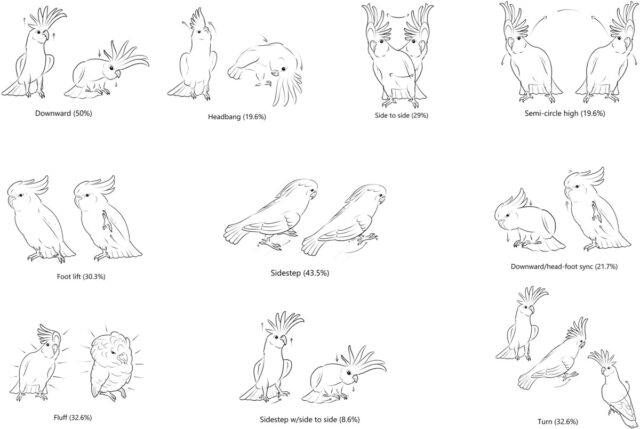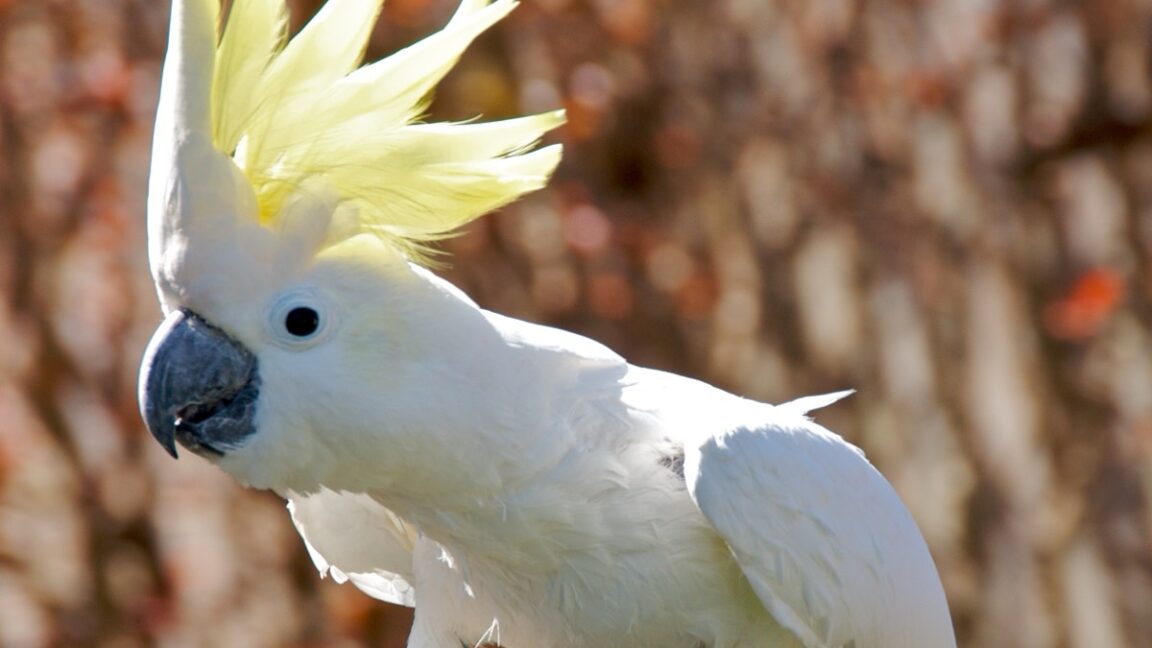Cockatoos know 30 distinct dance moves
Ten of 21 known cockatoo species exhibit dance behavior, and one bird executed 17 unique moves.
In 2008, a YouTube video featuring an Eleanora
cockatoo named
Snowball dancing to the beat of the Backstreet Boys went viral. His killer moves stunned scientists, since the ability to synchronize body movements to music was believed to be a uniquely human activity. Nor is Snowball an isolated case.
Griffi the Dancing Cockatoo has his own YouTube channel, for example, and a recent
TikTok video showed two sister cockatoos engaging in a dance-off to Earth, Wind & Fire's "September." But it's Snowball who
holds the Guinness World Record for most dance moves performed by a bird.
Snowball's record might be in jeopardy, however. A
new paper published in the journal PLoS ONE investigated dancing behavior in several parrot species and identified 30 distinct dance moves that the birds executed—17 of which had never been observed scientifically before and were performed by just one bird. So dancing in cockatoos and other parrot species seems to be much more complex and varied than previously thought. It's still unclear why parrots in captivity love to dance so much, but encouraging such behavior could help birds like these thrive in an environment they often find challenging.
Researchers at Charles Sturt University (CSU) in Australia scoured YouTube, Facebook, and TikTok for video footage of dancing birds, particularly cockatoos. For videos to be selected for inclusion in the study, they had to meet several criteria: They had to show a cockatoo in a domestic setting where music was being played at the same time the bird was dancing (videos where music had been added to the footage were omitted); the bird must demonstrate at least two different dance moves; and the camera angle had to provide a good view of the dancing bird. And each video had to feature a different bird.
They ended up with 45 videos of 45 different dancing cockatoos, which they analyzed to identify specific dance moves. The team relied on 16 known dance movements, as described in a 2019 paper about Snowball, to develop a "dancing ethogram" and to define what constituted a new movement. This revealed the aforementioned 30 distinct dance movements.
Illustration of the 10 most common recorded dance movements. Credit:
Lubke et al., 2025, PLOS One/CC-BY 4.0
They also analyzed the behavior of six cockatoos from three species at Australia's Wagga Wagga Zoo to test whether music would trigger similar dancing behavior in those birds. There were three "treatments": playing the song "The Nights" by Avicii; not playing any music; and playing a podcast called "She's on the Money" (the podcast had no music).
The results: Dancing behavior was present in 10 of the 21 known cockatoo species. The downward movement was the most common, observed in 50 percent of the birds, followed by the sidestep (43 percent), while movements involving just the wings were the most rare. Several birds also combined different moves in unique ways to develop their own individual style. Some species shared similar moves, but sulphur-crested cockatoos had three movements not shared by other species: the semi-circle low, semi-circle high with crest, and head-foot sync.
The CSU team was able to rule out the dancing as a form of stereotypic behavior, which is quite common in parrots. This would be voluntary movement patterns with no clear function or goal, performed repeatedly with little to no variation—feather plucking, screaming, or even self-mutilation. However, the cockatoos in the study exhibited considerable variation in their dance movements.
Prior studies have suggested that this kind of dancing behavior might be related to courtship displays, since there are similarities. Perhaps all those dancing online birds, in the absence of potential avian mates, are redirecting those impulses toward their human owners. Or perhaps it's just their way of interacting with their owners. But the authors concluded that their study "somewhat refutes any role of the owners in eliciting dance behavior."
These kinds of studies may provide insight into the complex cognitive processes in birds, per the authors. “The similarities with human dancing make it hard to argue against well-developed cognitive and emotional processes in parrots, and playing music to parrots may improve their welfare," said co-author Rafael Freire (CSU). "Further research would be beneficial to determine if music can trigger dance in captive birds and serve as a form of environmental enrichment.”
Ten of 21 known cockatoo species exhibit dance behavior, and one bird executed 17 unique moves.

arstechnica.com








